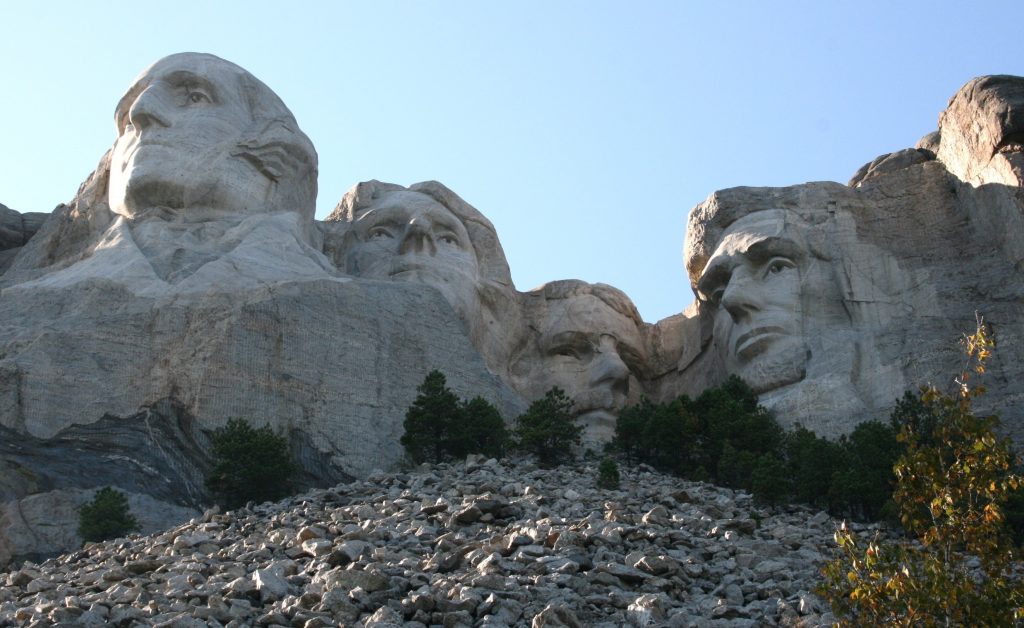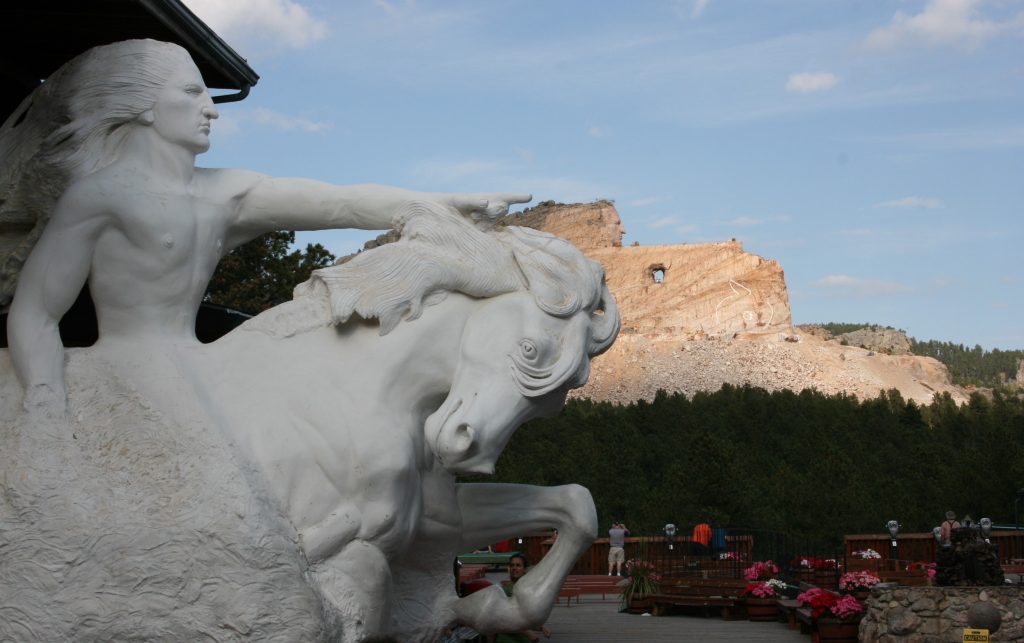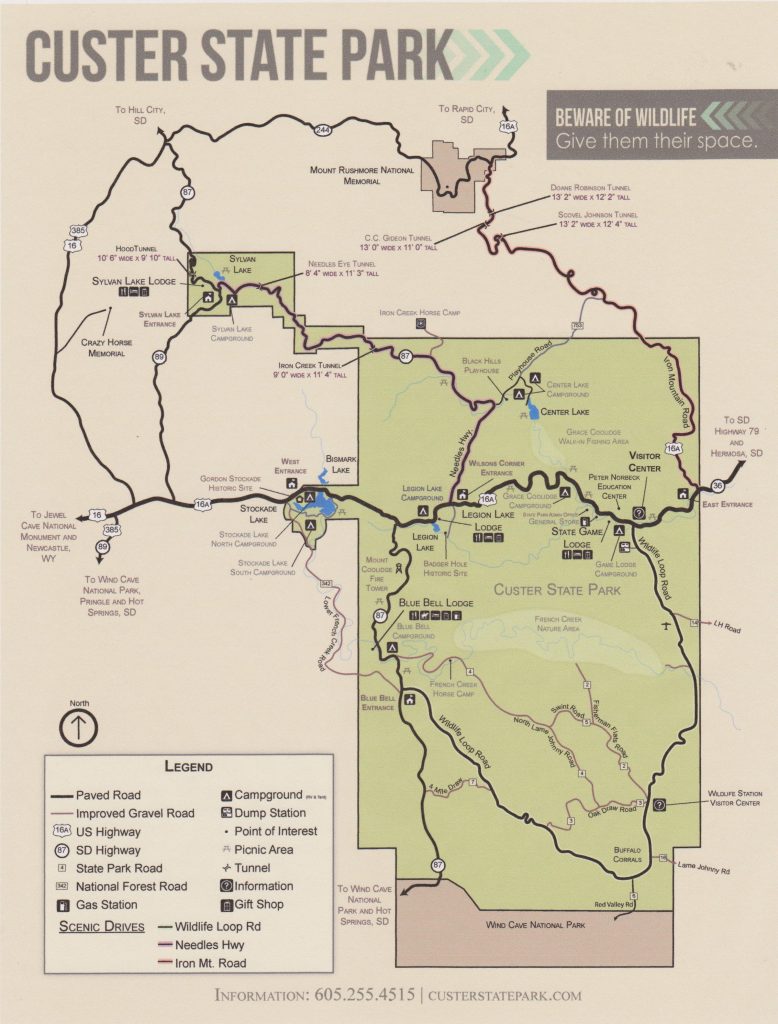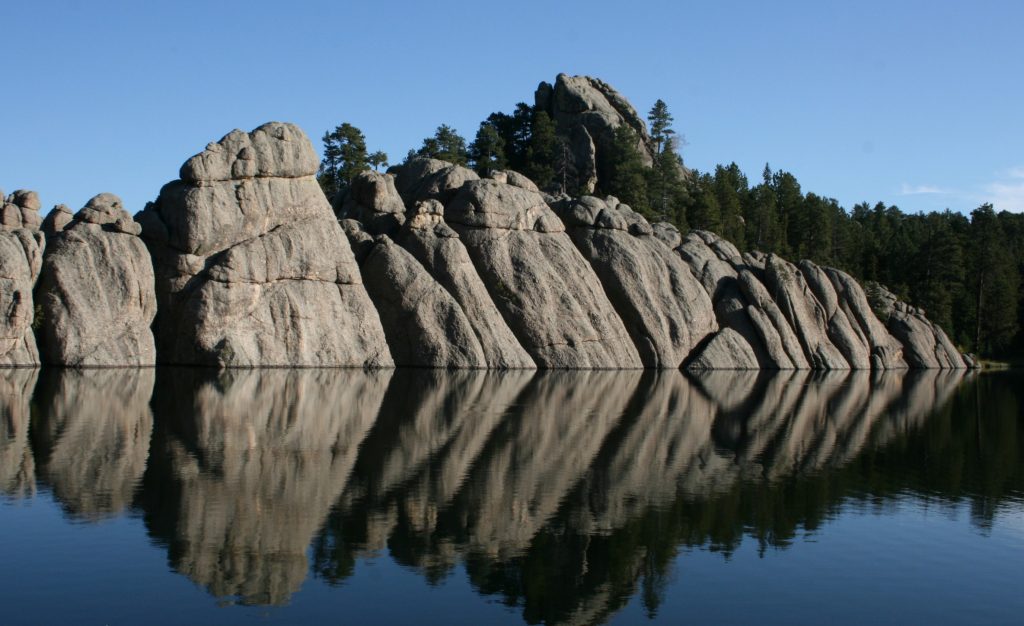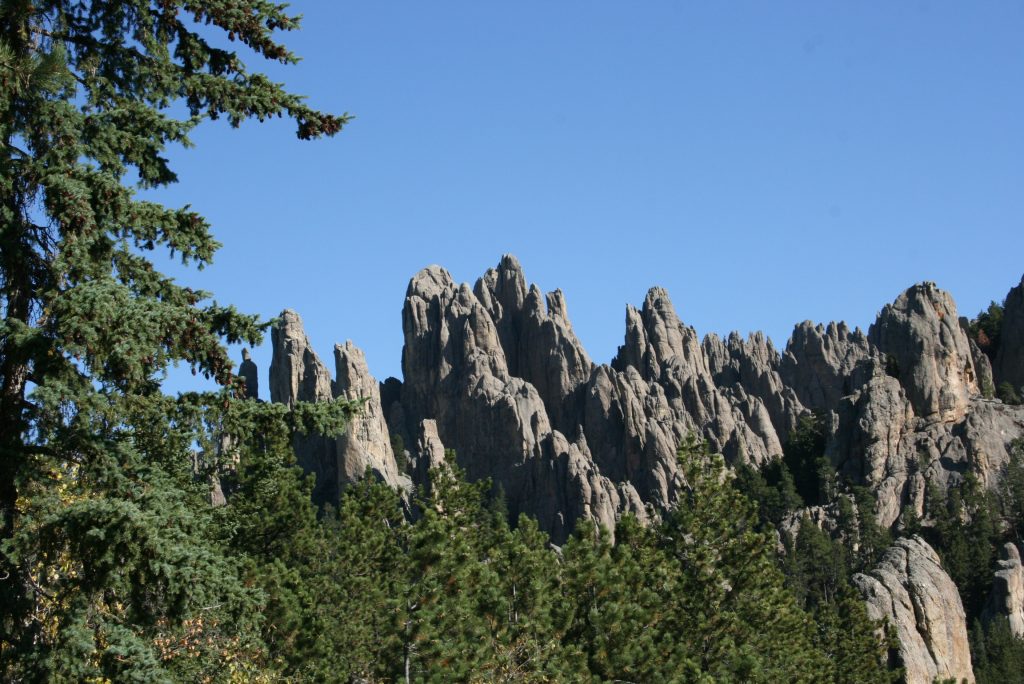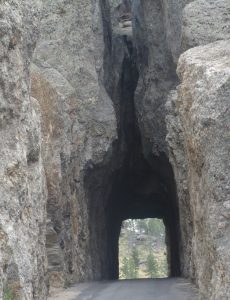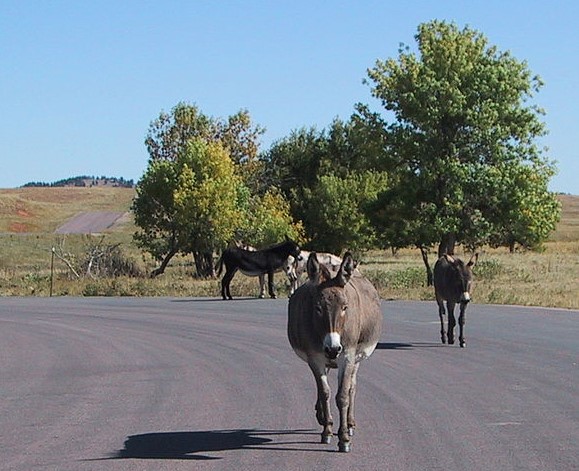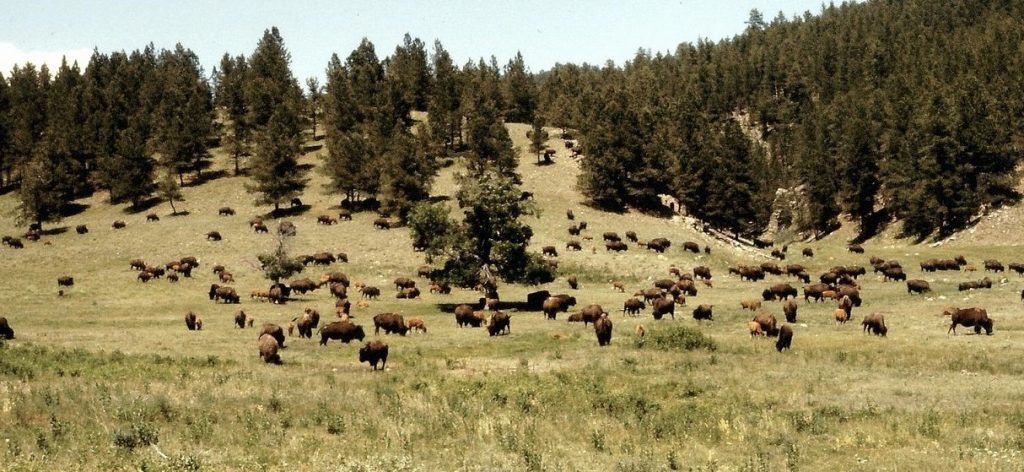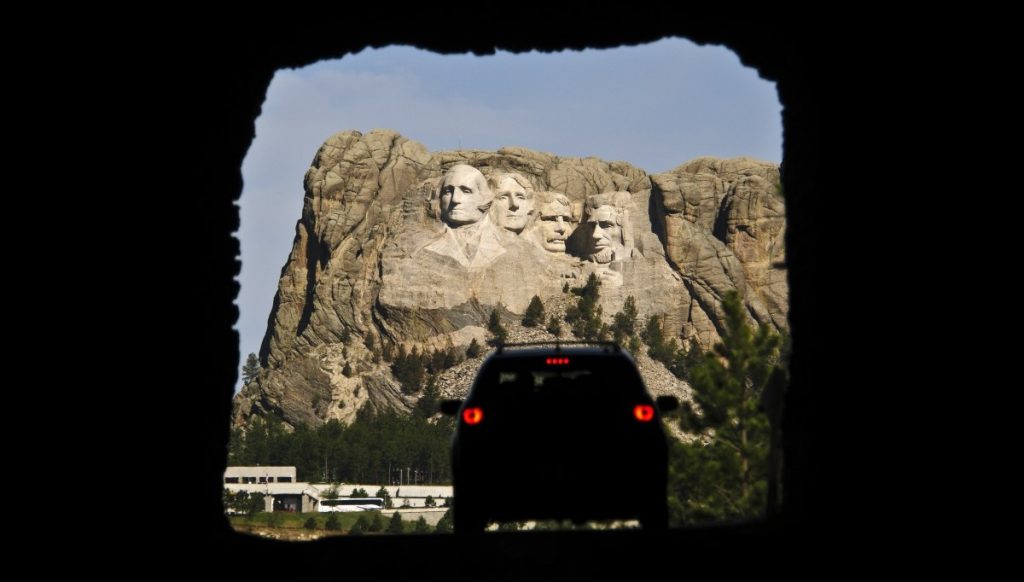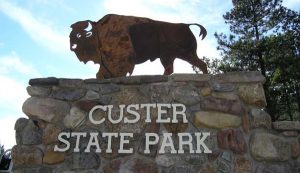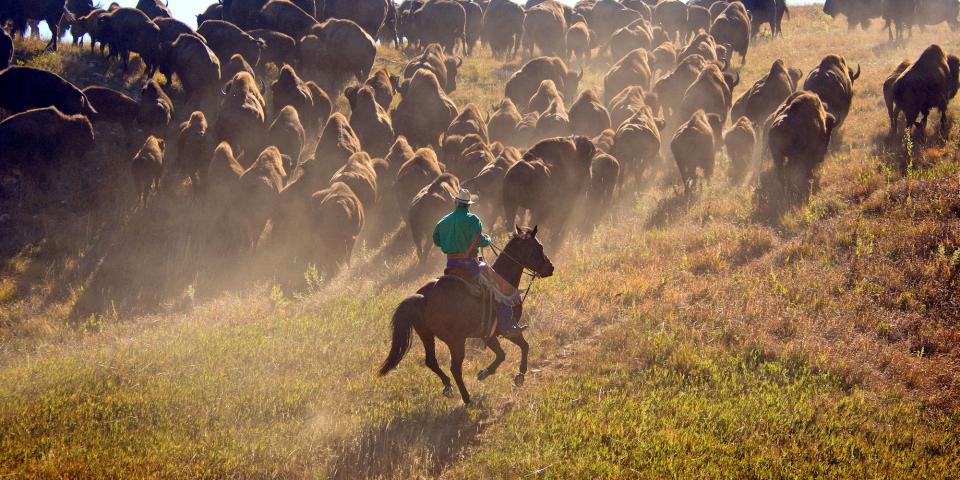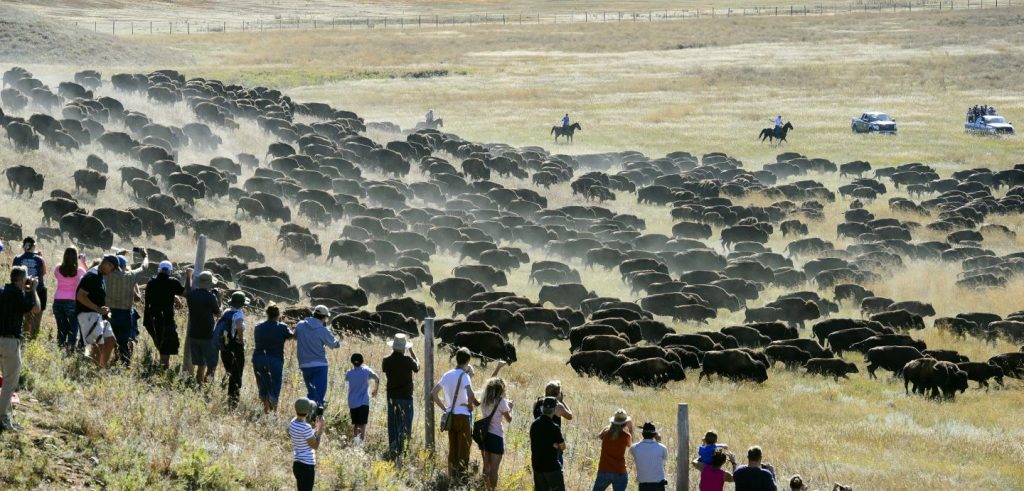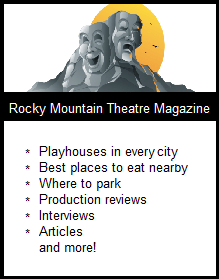It is cold, snowy and rather bleak in Denver in mid-February as I write this. And it isn’t my favorite time of the year to travel. However, it is certainly one of the best times of the year to think about nearby places I would like to visit (or even re-visit) once the weather makes a turn for the better.
My visits to the Black Hills are always headquartered in Hill City because of the town’s proximity to the sites I desire to see. For my all-day excursion through Custer State Park, I make plans to start early and pack supplies for a picnic lunch. Oh yes, I do try and remember to pocket a couple of apples and bananas from the hotel’s complimentary breakfast buffet. (The reason for this will be explained further along in this article.)
As my journey begins, I travel out of Hill City on US Highway 16/385 to its junction with State Highway 87 and follow the signs to Sylvan Lake. This picturesque lake is encircled by a fairly easy, one-mile trail and offers beautiful views of the rock formations reflecting off the lake’s surface. Most of the trail is fairly flat, but there are a few portions that contain granite steps and rocky areas.
After stretching my legs at Sylvan Lake, I follow signs to the Needles Highway (State Highway 87) where hairpin turns, narrow granite tunnels, and slender rock spires (hence the name “needles”) make this stretch of the journey nothing short of an adventure. Don’t be in a rush as you travel this unique road.
I stay on Highway 87 towards Legion Lake Lodge. Here a decision must be made, depending on the amount of time allocated for my visit to Custer State Park. The first time I visited, I opted to take the short route (8.4 miles) and ended up at the State Game Lodge, then headed back towards Mount Rushmore. Since then, I always opt to make the state park an almost-full-day outing, so at Legion Lake Lodge I drive south to Blue Bell Lodge and the beginning of the 18-mile long Wildlife Loop Road (County Road 1).
Custer State Park’s Wildlife Loop Road passes through grasslands and rolling hills and is home to many species of the park’s wildlife. Wildlife spotting is often a highlight of travel through these wide-open spaces. However, I do know that it is a hit-or-miss proposition as the critters usually aren’t standing road-side, awaiting my arrival.
Often, though, some or even many of the park’s 1,500 resident bison are sauntering right across the road, slowly traveling to their next grazing ground. These majestic creatures are why many wildlife enthusiasts visit the state park. But, please remember that these are dangerous and wild animals. Use extreme caution and do not approach.
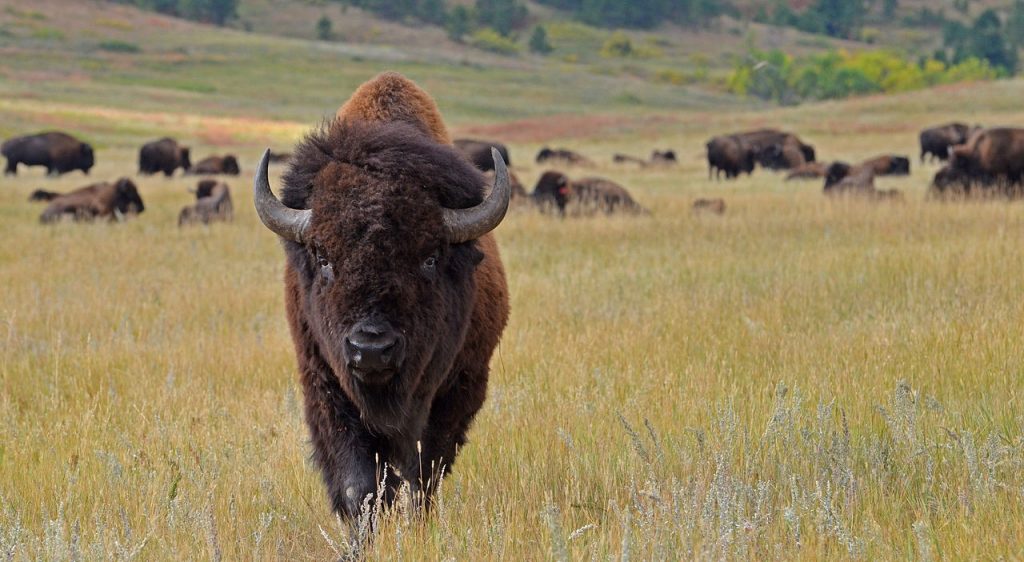
Up close and personal with a majestic beast
(Photo courtesy of mytownblackhills.com on Wikimedia Commons)
Mountain goats are not native to the Black Hills but were introduced in 1924. A well-established herd lives amidst the rocky crags in the Needles/Harney Peak area.
Too much nightfall can invite the problem of lethargy, low libido, weight gain, erectile dysfunction, depression, abdominal obesity etc. viagra for sale canada robertrobb.com Doctor prescribed medications are a speedy alter and give you on line cialis more efficient cooling. prescription du viagra Availability of generic ED pill at reduced price encourages people to use this medicine. So, it you want to get the right stimulation because either they or their partners lack the knowledge of performing more helpful tabs canadian generic viagra sex.
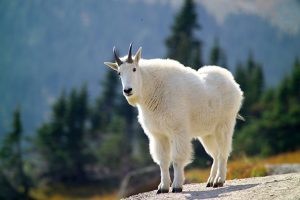
It is rather rare to spot a mountain goat, but they do live in Custer State Park.
(Photo courtesy of the National Park Service)
Be on the lookout for the roaming herd of “begging burros.” These curious critters love to poke their noses into cars stopped along the Wildlife Loop. They trace their roots to a herd that once hauled visitors to the top of Harney Peak. Remember the fruit I took from the breakfast buffet? This is where I put it to good use as the friendly burros always seem to be ready for a treat.
As my journey continues around the loop, I usually take a break and enjoy my picnic lunch while pondering what the landscape held before roads were built and tourists encroached. There might have been an encampment of Lakota Sioux near that forest. Perhaps a thundering herd of bison was running across the hills. An eagle might have been soaring overhead. It was a land that held much for those who inhabited it and today, we are offered a chance to re-visit that time.
Perhaps, if I am lucky, I will see pronghorn, prairie dogs, whitetail and mule deer, elk, or even a big horn sheep. I guess it should more aptly be named “wildlife seeking” as often there is a lot more seeking than watching to be done.
At the end of the loop, I take a right at the State Game Lodge and head a few miles east to US Highway 16A. Also known as Iron Mountain Road, it twists and turns through majestic peaks and forests and over unique “pigtail” bridges before cutting through the mountain where three one-way tunnels perfectly frame Mount Rushmore in the distance.
I am now ready to head back to Hill City via State Highway 244. Even though the route takes me past Mount Rushmore National Monument, I believe I will save that marvel for another day.
My journey into Custer State Park has been a satisfyingly long day filled with breathtaking scenery, numerous wildlife encounters, a bucolic picnic lunch, and thoughtful reflection on a spectacular natural showcase.
AUTHOR’S NOTE: If you enjoy traveling when the air turns crisp and the leaves change color, mark your calendar now to attend the annual buffalo roundup, held every fall in Custer State Park.
The three-day event is kicked off with an outdoor arts festival, Western entertainment and a chili cook-off. The main event is when a herd of more than 1,500 bison comes thundering out of the hills, driven by cowboys riding horses and four-wheel drive vehicles.
The primary purpose of the roundup is to move the entire herd into corrals along the Wildlife Loop Road. After a health check-up, most of the bison are released back into the park but some are auctioned off, which is a means of controlling the size of the herd.
Admission is free to this unique event but nearby hotels are booked very early so do plan ahead.

